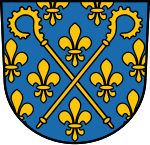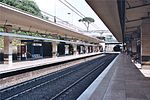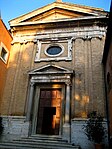San Saba, Rome
10th-century churches in ItalyBasilica churches in RomeChurches of Rome (rione San Saba)Titular churches

San Saba is an ancient basilica church in Rome, Italy. It lies on the so-called Piccolo Aventino, which is an area close to the ancient Aurelian Walls next to the Aventine Hill and Caelian Hill. The current Cardinal Deacon of the Titulus S. Sabae is Arthur Roche, succeeding Jorge Medina. Both served as prefects of the Dicastery of Divine Worship and the Discipline of the Sacraments at the time of their elevation. The titulus was established in 1959.
Excerpt from the Wikipedia article San Saba, Rome (License: CC BY-SA 3.0, Authors, Images).San Saba, Rome
Piazza Gian Lorenzo Bernini, Rome Municipio Roma I
Geographical coordinates (GPS) Address External links Nearby Places Show on map
Geographical coordinates (GPS)
| Latitude | Longitude |
|---|---|
| N 41.8786 ° | E 12.4855 ° |
Address
Basilica di San Saba
Piazza Gian Lorenzo Bernini
00154 Rome, Municipio Roma I
Lazio, Italy
Open on Google Maps










